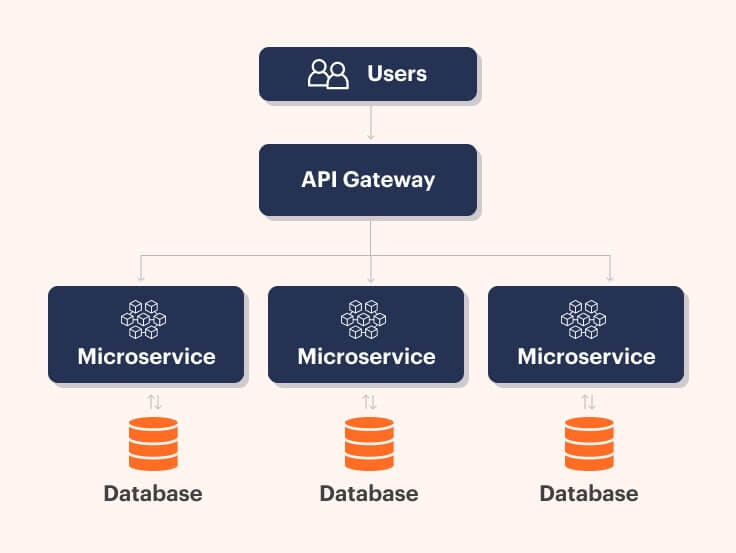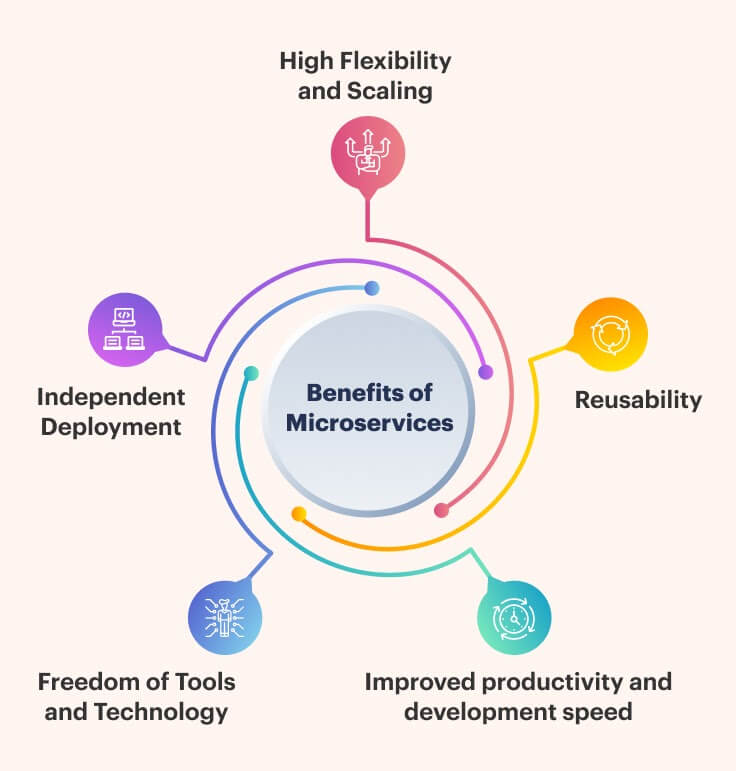Have you ever wondered how complex it would be to manage the world’s most successful software? Or how can developers handle platforms like Netflix, Instagram, Uber, Facebook, or Amazon? Well, these successful companies are using microservices. But what is microservice? Is it only for top tech giants? If you are not aware of microservice, don’t worry! Just read this blog, and you’ll learn everything you need to know about microservices.
Let us begin by understanding what microservice is.
What is ‘Microservices’?
To be very honest, there is no singular or standardized definition of microservices. Different users and tech giants define it in their own ways. But all these definitions cover the same concept. Let’s dive into them one by one.
Microservices.io defines it as “ Microservice or Microservice Architecture is an architecture that structures an application as a collection of small services. These Microservices are loosely coupled, deployable independently, owned by small teams, and are highly maintainable.”
Expand your business with our offshore resources
Whereas IBM defines it as “Microservice Architecture or Microservice are a cloud computing architectural approach in which a single application comprises independently deployable and loosely coupled smaller services.“
To make it simple and easy to understand, OpenXcell gives the following definition of microservices in layman language:
Microservice is a software development approach in which complex software is developed from loosely coupled small(micro) services. These small services are self-contained and communicate with each other through APIs. Similar to Headless CMS architecture.
You’ll get a clear idea when you understand how microservices work through their architecture.
Microservices architecture
Microservice architecture is composed of several different components based on the business and project-specific requirements. The standard architecture consists of API Gateway, Microservices, Database, and Inter Microservice Communication.

API Gateway
API Gateway works as an entry point for the user. Whenever the client calls an API, it forwards the call to a specific service. API Gateway also collects the response from the service and returns it to the client. Thus, API Gateway serves as an intermediate between user and services.
Microservices
As the name suggests, Microservices are services that are further split into smaller services. Each microservice is developed to perform its specific business competence. For example, a microservice could be user registration, user login, order status, or any other singular functionality in software development.
Database
A database is a collection of data and information that is stored in an organized way. Microservices can have shared as well as the independent isolated database.
Inter microservice communication
The internal communication between microservices happens through protocols. Rest and Messaging are two widely used protocols in inter microservice communication.
Characteristics of Microservices
Microservices have some significant characteristics. Let’s see what they are.
1. Specialized Components
Each service is specifically designed for a set of capabilities. Also, it focuses on solving a particular problem or delivering a specific solution. In case if service becomes complex with the addition of code, it can be divided into smaller services.
2. Independent
Each component of microservices can be built, deployed, and run without affecting other services. Different microservices communicate with each other via APIs but are not at all dependent on each other.
3. Decentralized
Microservices follow a decentralized governance approach. Each service has its own database instead of a centralized database like a monolithic architecture. Decentralization allows services to work independently and gives freedom to developers to use multiple technologies.
4. Failure protection
As the services are not dependent on each other for resources, the chances of failure are negligible. But then also if a microservice fails, its architecture is designed to cope up with the failure. Here other services can function appropriately while non-functioning services can be removed.
5. Straightforward
It is very simple in terms of communication. They work in a way where the request is received, processed, and then its response is generated. They just process data from endpoints with logic.
Benefits of Microservices
There are numerous advantages of microservices depending upon the project. Some of the most common benefits of microservices are listed below.

1. Independent Deployment
All microservices are kept independent of each other and can be deployed separately. It helps in the addition of new features and codes if required. At the same time, the CICD (Continous Integration and Continous Delivery) helps to roll back the changes if anything goes wrong.
2. High Flexibility and Scaling
The microservice architecture allows each service to scale at newer heights. If your project demand changes or increase at any point, you can scale microservices as per your requirements. It also enables development teams to resize infrastructure needs, calculate an accurate cost, and much more.
3. Freedom of Tools and Technology
Microservice allows using multiple tools, frameworks, and technology stacks for different services. Like monolithic architecture, it does not believe in one size fits all. As technology changes, applications built from microservice can adapt easily. This is one of the most significant benefits of microservices.
4. Reusability
Dividing a software development project into small areas can help a lot. A microservice created for one feature can be used for several other features as well. It also allows developers to develop new functionalities without writing code from scratch.
5. Improved productivity and development speed
Microservices break a larger functionality into more minor services that can be developed rapidly. It gives a free hand to development teams to work on different services without depending on each other. Thus overall productivity is increased as no developer faces the scarcity of resources.
Apart from the mentioned advantages, there are many other benefits of microservices. It totally depends on how you leverage the functionalities offered by microservices.
Conclusion
In today’s rapidly changing and competitive environment, businesses must stand apart from the crowd. Also, companies now need to offer personalized customer service to scale. The best way to achieve these benefits is by using microservices.
In upcoming years, more and more businesses will be leveraging the benefits of microservices. If you are one of those who want to go hand in hand with the latest technology and build modern-day experience, you are at the right place. OpenXcell is here to help you out with building software with microservice architecture. Contact Us to turn your next big idea into a world-class solution.









